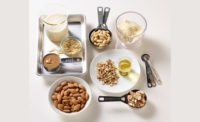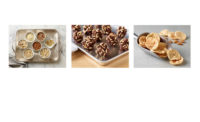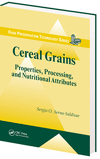Of Innovation and Almonds
The only sustainable source of competitive advantage is innovation, and innovation is imperative in the food and nutrition sector. So claim Kantha Shelke, Ph.D., principal of Corvus Blue LLC, and chef John Csukor, CEO of KOR Food Innovation, consultants to the Almond Board of California, in their recent R&D Seminar titled, “Usage of Almond Forms in Healthy Bakery and Pastry Applications,” for Prepared Foods’ R&D Seminars-Chicago.
Innovation, according to the presenters, is not an exercise and is not homogenous. It happens at different levels and can happen when someone looks at the ordinary and creates extraordinary things with it. As Shelke said, “You know it’s innovative, when others say, ‘Now, why didn’t I think of that?’”
There are some prevalent market trends, based on transaction data in the retail and foodservice sectors, and all point to households in America wanting simplicity and wholesomeness in foods, whether they are purchasing food or making it themselves. These trends are health and wellness; weight management; conscientiousness; affordability; kid-friendliness; and convenience.
In general, and within these themes, consumers are seeking nutrient density, satiation, natural, heart-healthy, low-glycemic and convenience. Convenience means simplicity, says Shelke, meaning nothing too complicated nor too highly fabricated. To design foods that will be successful in this environment requires ingenuity, and this is where innovation is key.
It helps, said Shelke, to start by understanding consumer perspectives of high-quality foods. Consumers, she says, want foods that are: simple, but not enhanced; natural, not artificial; healthful, without being either overbearing or boring; wholesome without fabrication; convenient without being over-engineered; and “sensual and contemporary.”
The driving question seems to be: how to transform something like a traditional breakfast into something deliciously healthy, with foods that are both affordable and convenient?
In a word, almonds are the answer. Here, says Shelke, is an ingredient that is already a destination ingredient in many categories. “Can we do something innovative with almonds for the breakfast category--other than slices of almonds in cereals?” Can health and pleasure and functionality be combined into something convenient, yet something consumers will want every morning?
The questions were answered with a plethora of food concepts developed by research chef John Csukor. This included a healthful, easy and tasty, low-glycemic cereal made entirely from different almond forms (see recipe sidebar); a heart-healthy, satiating, almond-flour-based meal-replacement breakfast bar; an innovative, tasty beverage that touts hearth health and satiety; and finally, an innovative breakfast pasta dish made with an almond-based crème that acts as a dairy substitute. This last offering suggests comfort foods can be used for breakfast or snacks. The crème used is a 100% natural, non-dairy, non-soy creamer substitute that is also lactose- and cholesterol-free.
In other words, “Repurposing breakfast foods means breakfasts are not only for mornings. Breakfast foods can be for snacks or other meal occasions,” finishes Shelke. And, it seems, with almonds, the possibilities are truly endless. pf
For more information:
Almond Board of California • Modesto, Calif.
Harbinder Maan • 209-343-3214
hmaan@almondboard.com • www.AlmondBoard.com
Seminar presenters:
Kantha Shelke, Ph.D. • 312-951-5810 • kantha@corvusblue.net
John Csukor • 804-496-6748 • john@korfoodinnovation.com
Looking for a reprint of this article?
From high-res PDFs to custom plaques, order your copy today!






